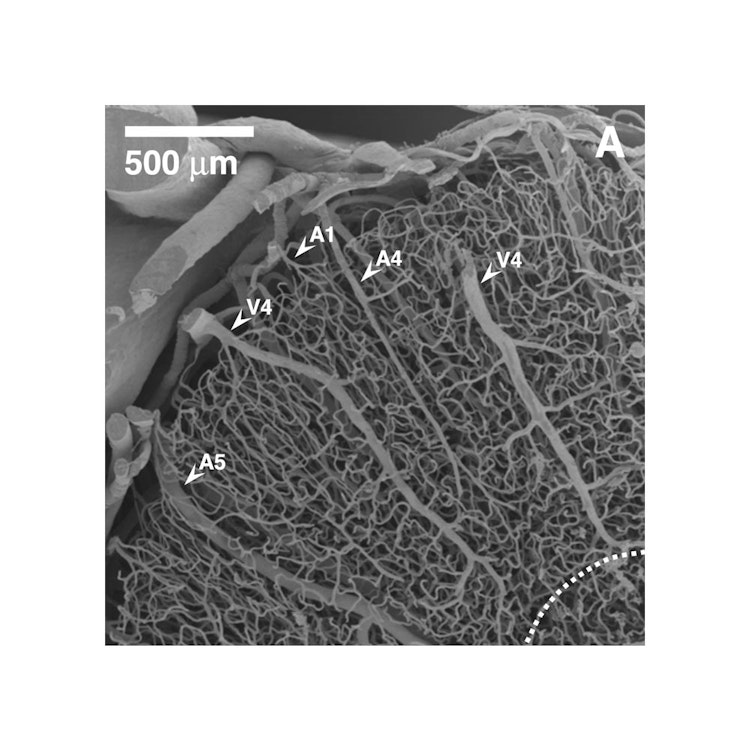
The Microvascular System of the Striate and Extrastriate Visual Cortex of the Macaque
In functional neuroimaging, neurovascular coupling is used to generate maps of hemodynamic changes that are assumed to be surrogates of regional neural activation. The aim of this study was to characterize the microvascular system of the primate cortex as a basis for understanding the constraints imposed on a region’s hemodynamic response by the vascular architecture, density, as well as area- and layer-specific variations. In the macaque visual cortex, an array of anatomical techniques has been applied, including corrosion casts, immunohistochemistry, and cytochrome oxidase (COX) staining. Detailed measurements of regional vascular length density, volume fraction, and surface density revealed a similar vascularization in different visual areas. Whereas the lower cortical layers showed a positive correlation between the vascular and cell density, this relationship was very weak in the upper layers. Synapse density values taken from the literature also displayed a very moderate correlation with the vascular density. However, the vascular density was strongly correlated with the steady-state metabolic demand as measured by COX activity. This observation suggests that although the number of neurons and synapses determines an upper bound on an area’s integrative capacity, its vascularization reflects the neural activity of those subpopulations that represent a ‘‘default’’ mode of brain steady state.
Download
weber_2008.pdfResearchers
